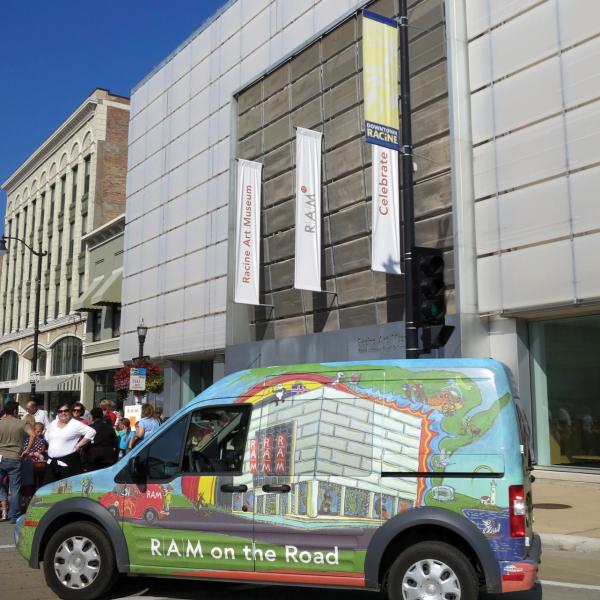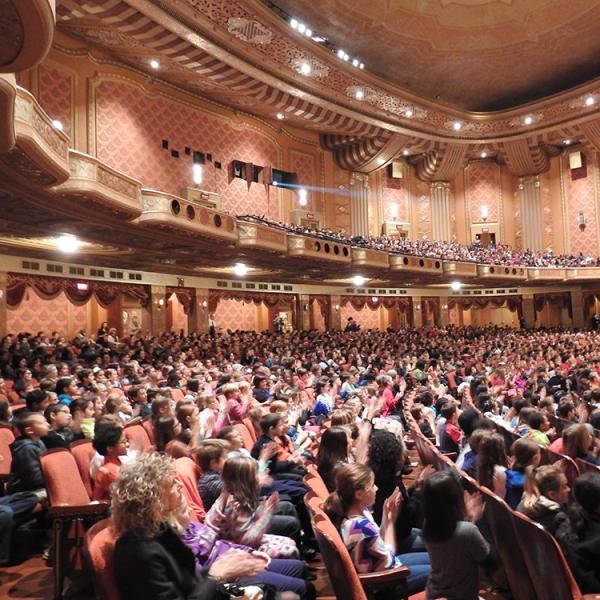Rural and Proud
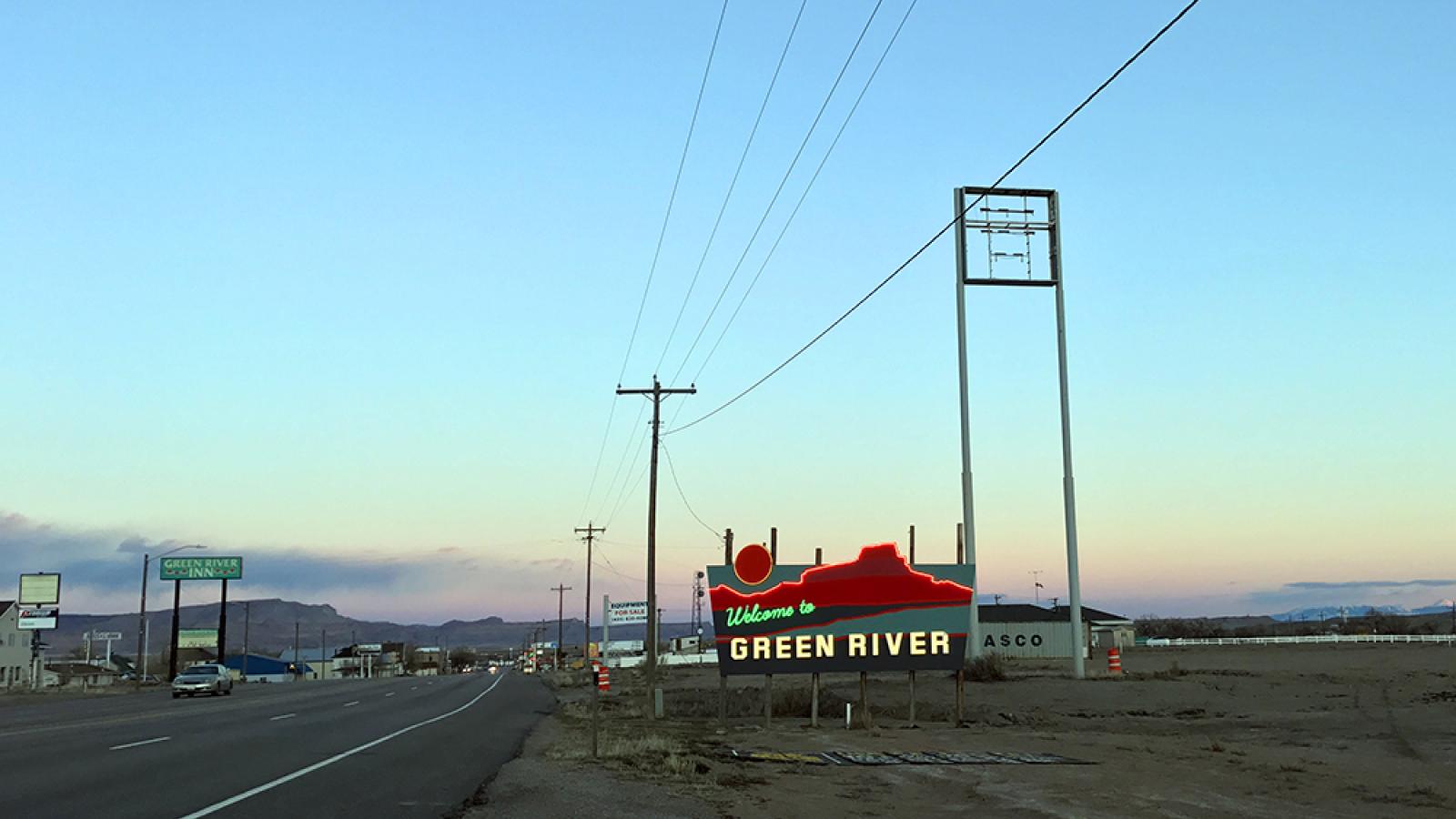
Green River, Utah’s new neon welcome sign by artist Lisa Ward for her Green River Lights project as part of the Rural and Proud Initiative supported by a 2016 NEA Our Town grant. Photo by Ryan Baxter
Green River, Utah, (population 952) is in the southeastern part of the state, 52 miles north of the mountain biking mecca of Moab and 182 miles from Salt Lake City. The high desert country here is stark and lunar, fierce and beautiful. Sparsely vegetated plains extend far into the distance, interrupted by rocky towers of reddish brown and flat-top buttes with magnificent, striated sides. However, there are fertile areas here that support agriculture and creativity. Since 2009, much of that creativity has been driven by a local arts organization called Epicenter.
Epicenter's tagline is "Rural and Proud." As stated on their website, "To accentuate Green River’s rural pride and pioneering spirit,Epicenter provides housing and business resources and promotes the arts. A passionate, multidisciplinary team of young professionals, we engage, collaborate with, and learn from our community."
Started by Jack Forinash, Rand Pinson, and Maria Sykes, AmeriCorps VISTA volunteers and graduates of Auburn University's School of Architecture, Epicenter grew out of and maintains a focus on affordable housing. Forinash and Sykes are now principals with Epicenter of housing and arts and culture respectively, while Pinson serves on the organization’s board of directors. Their work ranges from designing and building a prototype home that matches the size of a single-wide trailer (popular in Green River) to adding lighted benches in the business area to organizing festivals.
In support of this work, Epicenter has received grants from Utah's state arts agency, the Utah Division of Arts and Museums (UDAM), and has garnered four NEA grants. Cumulative NEA funding is roughly $120,000, while UDAM grants range between $11,000 and $14,000 annually, and are unrestricted and devoted to sustaining the organization's day-to-day operations and regularly occurring programs. "We think of our relationship with the state as ongoing support, leadership training, and networking," said Sykes. "We think of our NEA funding as very project-specific that might tie into our ongoing work but allow us to accomplish big ambitious projects that are shorter term. They both have a lot of value in our little community."
Although the federal and state grants serve different purposes, they both help leverage other funding, and have helped Epicenter extend beyond the projects undertaken in Green River. The ripples of influence reach nationally and internationally when Epicenter staff are invited to conferences and meetings to share their stories with others committed to arts-based rural development. Sykes and Forinash have traveled as far as Iceland to exchanges ideas and explore partnerships.
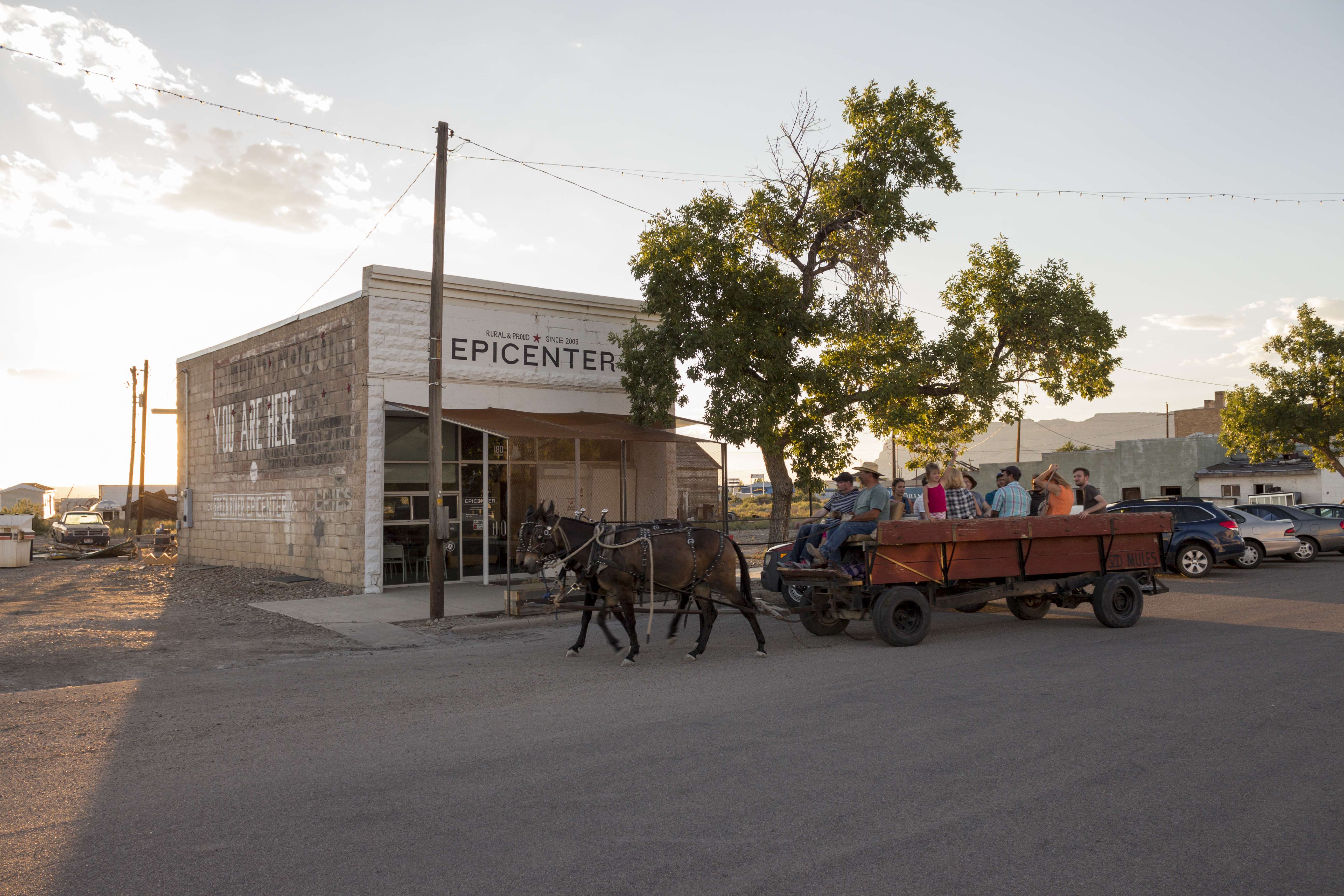
|
If not for Epicenter, this type of influence would have been inconceivable for Green River, whose history is one of peaks and valleys as the railroad, uranium mining, and a missile base came and went. In the 1970s, Interstate Highway 70 was built but bypassed downtown. When Moab to the south embraced mountain biking and the town's proximity to the national parks, Green River didn't find something on which it might have capitalized. Businesses closed, buildings fell into disrepair, and people left. Today, one in four people in Green River lives in poverty and the median income is approximately $38,000.
Despite these challenges, or in part because of them, Forinash was drawn to the town. Green River's strong interest in affordable housing and its western, rural setting appealed to his desire to make a difference in a community's life. He suggested that Sykes come and spend a summer in Green River to check it out. She immediately fell in love with the people and the landscape. "There's a reason to come and there's a reason to stay," she said. "Seeing the challenges of Green River as opportunities to develop programs and work with people was the reason to stay. Engaging with different community members that are passionate about this place, you learn more all the time. The history is constantly unfolding."
When the team started Epicenter, their first projects were renovating a building that became their headquarters and conducting a housing study which found that approximately 50 percent of houses in Green River needed major repairs. This led to their Fix-It First program of home repairs and other projects developed after that.
Although neither Sykes nor Forinash were from Green River, Laurel Cannon Alder, UDAM's grants manager, said their devotion to the community was clear from the start. She noted that Epicenter is "a unique local arts agency" whose work "has created a sense of community for the diverse population who inhabit this small town. Rather than coming into this town with an outsider's agenda, the directors of Epicenter have helped lifelong residents name and celebrate their pride in their own community, and find ways to strengthen and improve the community for generations to come."
Through the years, UDAM has funded Epicenter, but also has helped them grow as an organization. "They’re intimate supporters of Epicenter," Sykes said of UDAM. "I know the entire staff, and they've helped out in different ways." For example, UDAM offers leadership training called the Change Leader Program, a weekend of sessions for arts and non-arts professionals from across the state that later becomes a valuable network. It was through the network that Sykes and Epicenter's Principal of Economic Development Chris Lezama learned how to introduce and assure passage of a RAP (Recreation, Arts, and Parks) tax for Green River. She added, "Getting a tax passed in a rural community, especially with the word 'art' in it, is a really, really big deal."
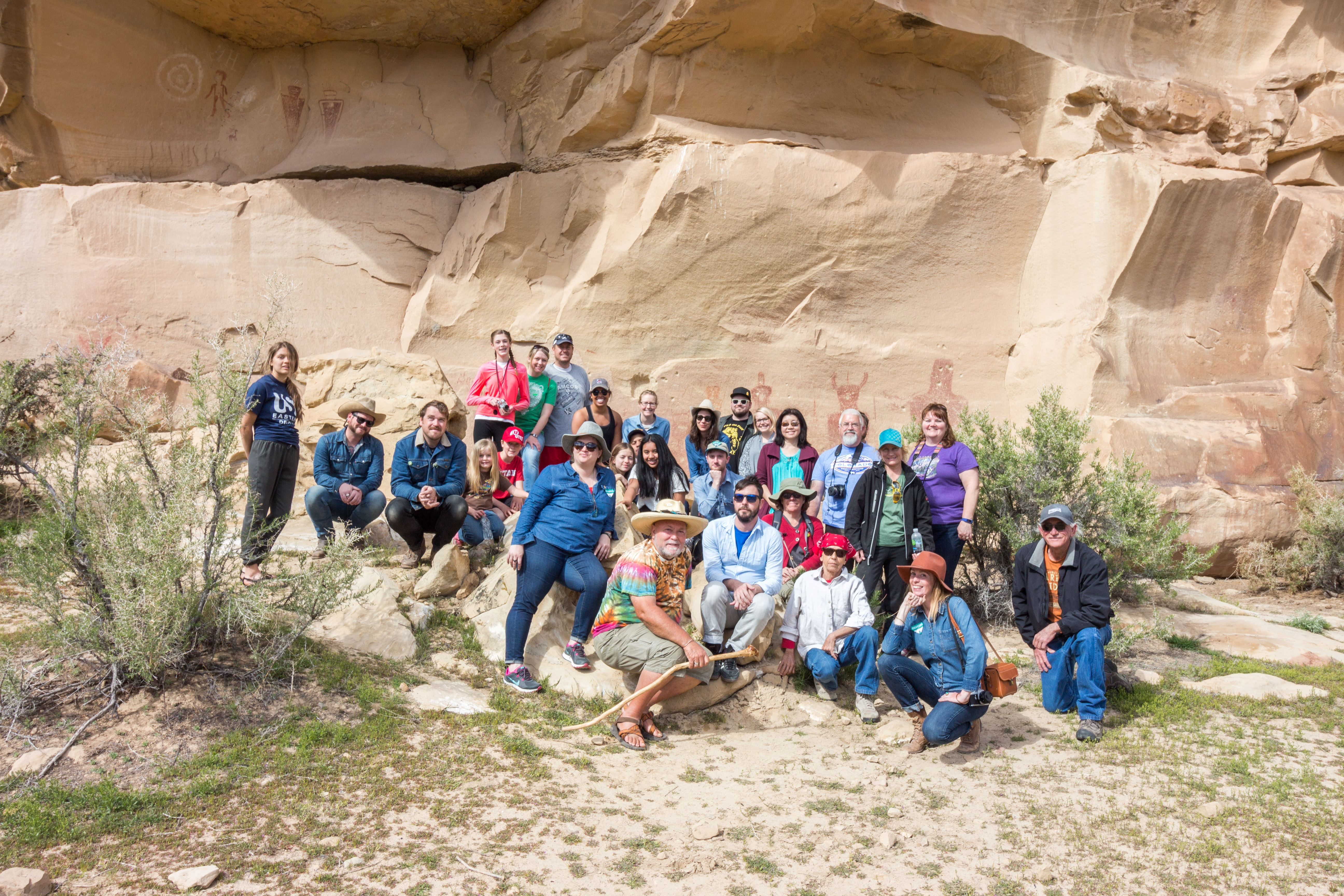
|
Then in 2015 Epicenter received the Governor's Award for Local Arts Agencies for their exceptional work and for being a model not only for Utah, but for the nation. As UDAM Executive Director Victoria Panella Bournes noted, "They are a star in terms of rural Utah."
To complement this state support, Epicenter received two NEA grants in 2015 and 2017 to support their Frontier Fellowships, one of Epicenter's first programs. Creative professionals apply for fellowships and are selected to come to Green River for four weeks to create new work that emerges from their interactions with residents and with the natural surroundings. Fellows' work covers a range of artistic mediums, from publications to music, filmmaking, photography, and interdisciplinary events. The visiting artists often collaborate with Green River High School students and the John Wesley Powell Research Center and Archives. While these fellows have a chance to deeply engage with the community, they bring a fresh perspective and energy to Green River. Their artwork highlights the town's unique cultural richness, benefitting both residents and the fellows' own communities with lessons the artists learned from their time in Green River.
In 2016, Epicenter also received an Our Town grant for their Rural and Proud Initiative, a three-phase downtown revitalization initiative. The first phase, which Epicenter has nearly completed, entails the development of a public art and design plan that will lead to installations, programming, and design standards to guide future development. In 2017, the organization received a second Our Town grant to continue its activities on creative public space improvements.
To begin the process and support local ongoing revitalization efforts, Epicenter selected designers to propose small-scale projects in downtown Green River. Project proposals were encouraged to reinforce the distinct character of Green River and activate forgotten locations downtown. A committee of Green River citizens reviewed proposals and chose three projects: Reinhabitation (Artist: Erin Carraher and University of Utah Architecture + Planning students), Green River Lights (Artist: Lisa Ward), and the Green River Rock & Mineral Festival (Artists: Alison Jean Cole, Lisa Ward, and Anna Evans). The next step will be asset mapping to surface previously unrecognized creative assets, venues, and partners, as well as engaging a designer-in-residence to develop small-scale projects.
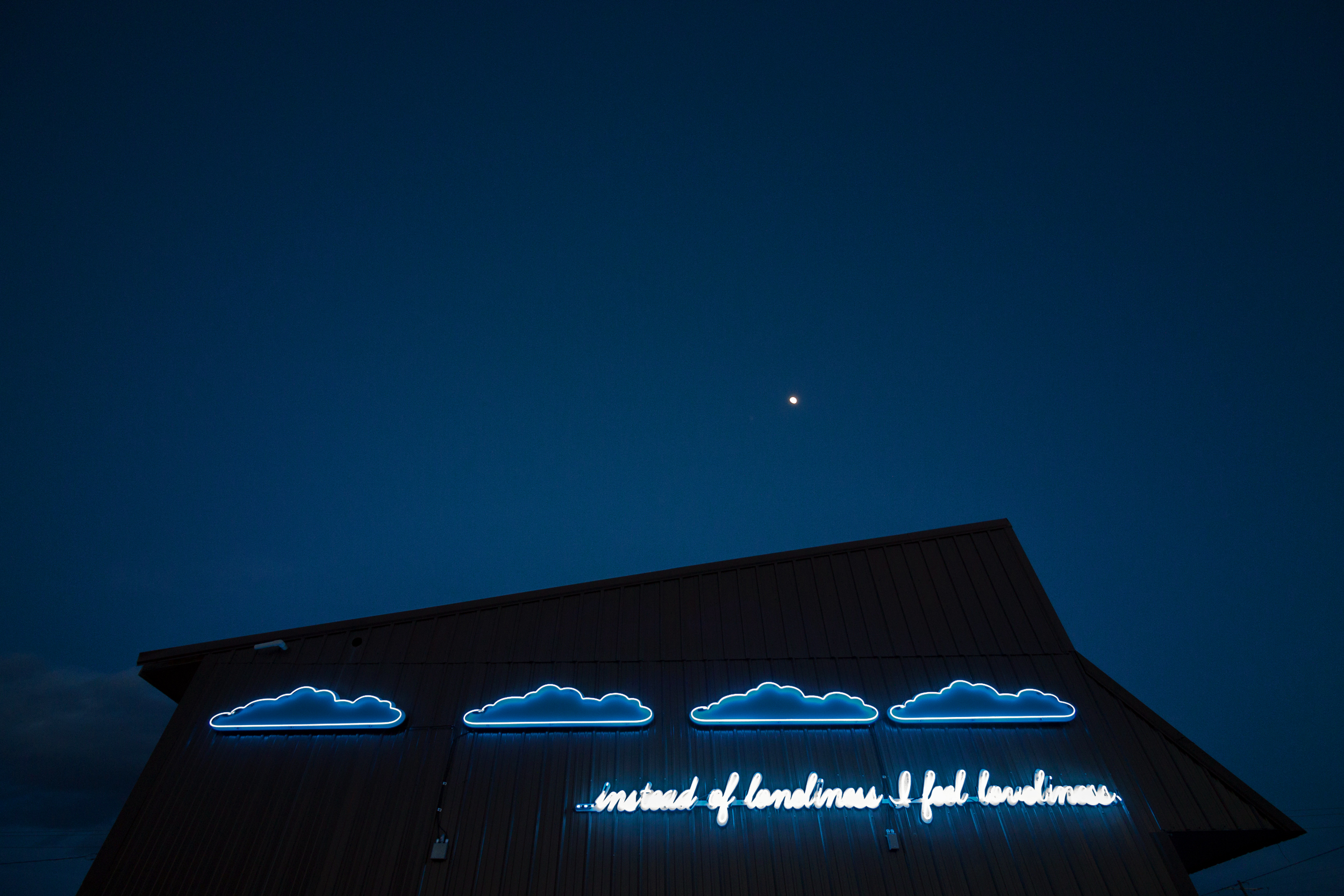
|
Although the main focus of Epicenter is to improve the quality of life in Green River and help advance the rural art-based development field, Sykes hopes that Epicenter will help address larger social concerns that affect all Americans, whether they live in rural areas or not.
"There needs to be a greater connection between urban and rural places," said Sykes. "The natural and agricultural resources that make people's lives successful in the city come from rural places, and yet urban residents may not care. But rural and urban places have to come together to create a sustainable future. Many urban places are becoming unaffordable and rural places often are struggling economically. What can we do, all of us working together, to make both places better for everyone?"


